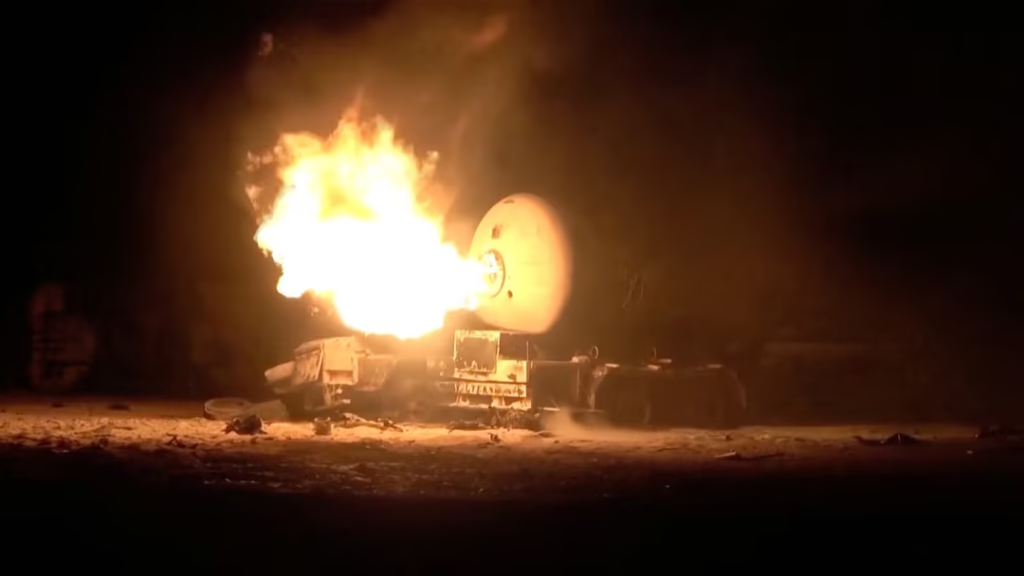The United States carried out its deadliest airstrike in Yemen to date on Thursday, killing at least 74 people and injuring 171 more in a targeted attack on the Ras Isa fuel terminal, according to the Houthi-run health ministry. The Red Sea port facility, located roughly 55 kilometers north of the city of Hodeidah, was heavily damaged in what has become the most lethal single strike in Washington’s campaign against the Iran-aligned Houthi movement.

The airstrike was part of a broader military escalation ordered by President Donald Trump last month—marking the largest U.S. military operation in the Middle East since he assumed office in January. The Trump administration has vowed to keep up the pressure on the Houthis until they fully halt their attacks on international shipping lanes in the Red Sea.
The U.S. military confirmed the strike but did not comment on the casualty figures released by the Houthis. In a brief statement posted on X, U.S. Central Command said the strike was aimed at degrading “the economic source of power of the Houthis, who continue to exploit and bring great pain upon their fellow countrymen.” The Ras Isa terminal is a critical node in the Houthi-controlled economy, generating hundreds of millions of dollars in revenue annually through fuel import taxes.
According to Yemeni sources, the port serves not only as a commercial fuel hub but also hosts a substantial military presence. The strike reportedly killed employees of both the Safer Oil Company, which operates the terminal, and the Yemen Petroleum Company, which oversees the distribution of imported fuel.
Health ministry spokesman Anees al-Asbahi described the bombing as “a massacre,” stating that emergency crews were still working to extract bodies from the rubble as of Friday morning. He warned that the death toll could rise significantly as search and rescue efforts continue.
Washington and its allies, including Israel, have previously targeted the Ras Isa facility, which they believe has been used by the Houthis to launch drones and missiles aimed at commercial and military vessels in the Red Sea. Since November 2023, the Houthis have launched dozens of such attacks, claiming they were targeting ships linked to Israel in protest of the war in Gaza.
Although the group observed a temporary ceasefire during a two-month pause in Israeli operations, they pledged to resume attacks following Israel’s renewed assault on Gaza in March. Despite that vow, no new Red Sea attacks have been confirmed in recent weeks, prompting questions about the Houthis’ current military capabilities or strategy.
U.S. officials maintain that the Ras Isa strike was necessary to sever a key logistical and financial artery sustaining the group’s military operations. With a storage capacity of around 3 million barrels, the facility is one of Yemen’s largest and most strategically significant fuel terminals.
The deadly strike underscores the Trump administration’s increasingly aggressive posture toward the Houthis and their Iranian backers. While the U.S. has focused its diplomatic efforts on resolving the conflict in Ukraine, its military attention in the Middle East is expanding—particularly in response to the Houthis’ growing influence and disruption of global trade routes through the Red Sea.
In March, a similar two-day barrage of U.S. airstrikes killed more than 50 people, according to Houthi officials. Thursday’s bombing now surpasses that in both scale and impact, drawing international scrutiny amid escalating regional tensions.
President Trump has defended the strikes as necessary to protect global commerce and U.S. interests in the region. Critics, however, warn that such operations risk deepening Yemen’s humanitarian crisis and further destabilizing the war-torn country.
As images of the destroyed terminal and mangled debris circulated on social media, humanitarian organizations urged restraint and called for independent investigations into the attack. The U.N. has yet to issue an official response but has repeatedly warned that targeting civilian infrastructure could constitute a violation of international law.
Regional observers say the strikes may signal a shift in U.S. tactics from containment to crippling economic warfare, aimed at forcing the Houthis into submission or to the negotiating table. Yet, with the group still in control of large swathes of northern Yemen and significant military assets, the long-term effectiveness of such strikes remains uncertain.
For now, Ras Isa lies in ruins, its port operations halted, and dozens of families left mourning. As the U.S. continues its campaign, the question looms: will this intensification bring peace to the Red Sea—or ignite a broader, more dangerous conflict in the Middle East?



